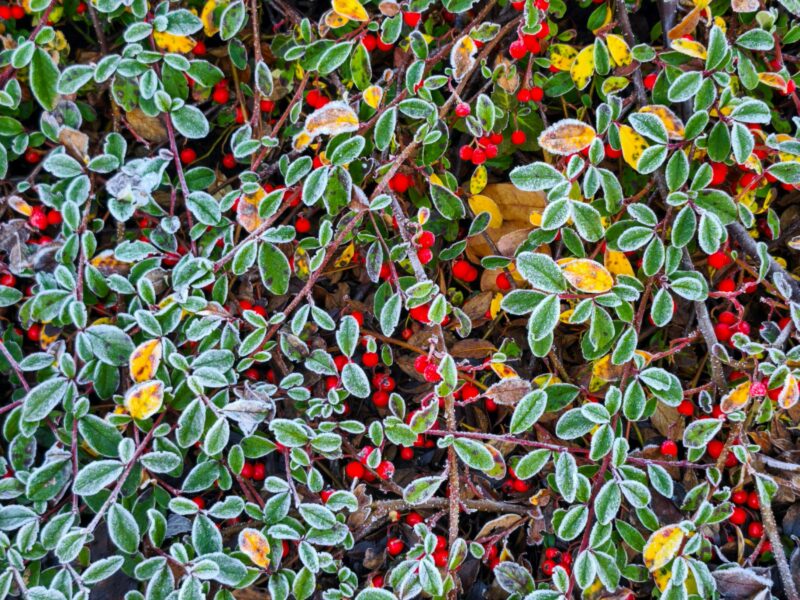As the days grow shorter and temperatures begin to drop, it’s time to start thinking about preparing your garden for winter. While it might be tempting to simply let nature take its course, taking a few steps now can ensure that your garden not only survives the winter months but also thrives come spring. Proper winter preparation helps protect your plants, improves soil health, and sets the stage for a vibrant and productive garden in the next growing season. In this post, we’ll guide you through essential steps to prepare your garden for winter and give your plants the best chance for a healthy spring bloom.
1. Clean Up the Garden: Remove Debris and Dead Plants
One of the first steps in preparing your garden for winter is to clean up any debris and remove dead or dying plants. This not only keeps your garden looking tidy but also helps prevent the spread of pests and diseases that can overwinter in plant debris.
How to Clean Up Your Garden:
- Remove Dead Plants: Pull up any annuals that have finished their life cycle, and trim back perennials that have died back. Leaving dead plants in the garden can create a breeding ground for pests and pathogens.
- Rake Fallen Leaves: While a thin layer of leaves can provide some insulation, large piles can smother your lawn and garden beds, leading to mold and other problems. Rake up excess leaves and add them to your compost pile.
- Dispose of Diseased Plant Material: If you have any plants that were affected by diseases, such as powdery mildew or blight, be sure to dispose of them in the trash rather than composting them. Composting diseased plants can spread the disease to other parts of your garden.
Pro Tip: Consider leaving some plant material, like seed heads and ornamental grasses, standing for winter interest and to provide food and shelter for wildlife.
2. Amend the Soil: Improve Soil Health Over Winter
Winter is a great time to improve your garden’s soil by adding organic matter and other amendments. These additions will break down over the winter, enriching your soil and preparing it for the next growing season.
Steps to Amend Your Soil:
- Add Compost: Spread a layer of compost over your garden beds to improve soil structure, add nutrients, and encourage beneficial microbial activity. Compost will continue to break down over the winter, leaving your soil rich and ready for spring planting.
- Incorporate Organic Matter: Organic materials like shredded leaves, straw, and well-rotted manure can be worked into the soil in the fall. These materials will decompose over the winter, adding valuable nutrients and improving soil texture.
- Test and Adjust Soil pH: If you haven’t tested your soil’s pH recently, fall is a good time to do so. If your soil is too acidic or too alkaline, you can add lime or sulfur to adjust the pH. Doing this in the fall gives these amendments time to work before spring planting.
Pro Tip: Avoid adding too much nitrogen-rich material in the fall, as this can encourage plants to put on new growth that may not survive the winter.
3. Mulch Your Garden Beds: Protect Plants and Soil
Mulching is one of the most important steps you can take to protect your garden over the winter. A thick layer of mulch insulates the soil, helps retain moisture, and prevents soil erosion. It also protects plant roots from temperature fluctuations and frost heaving.
How to Mulch Your Garden for Winter:
- Choose the Right Mulch: Organic mulches like straw, wood chips, shredded leaves, and pine needles are ideal for winter protection. These materials will break down slowly, adding organic matter to the soil over time.
- Apply a Thick Layer: Spread mulch about 3-4 inches thick over your garden beds. Be careful not to pile mulch directly against the stems or trunks of plants, as this can cause rot.
- Mulch Around Trees and Shrubs: Mulching around the base of trees and shrubs helps protect their roots from freezing temperatures. Extend the mulch out to the drip line of the plant for maximum protection.
Pro Tip: Wait until the ground has started to freeze before applying mulch. This helps prevent rodents from burrowing into the mulch and damaging plants.
4. Protect Perennials: Ensure They Return in Spring
Perennials are the backbone of many gardens, providing structure and color year after year. However, they can be vulnerable to winter’s harsh conditions, especially in colder climates. Taking steps to protect your perennials will ensure they come back strong in the spring.
How to Protect Perennials for Winter:
- Cut Back Perennials: Most perennials benefit from being cut back in the fall, especially those prone to diseases like powdery mildew. Cut plants back to a few inches above the ground. However, leave the seed heads of plants like coneflowers and ornamental grasses if you want to provide winter interest or food for birds.
- Divide and Transplant: Fall is a good time to divide overgrown perennials and transplant them to new locations. This gives them time to establish their roots before winter and ensures healthier growth in the spring.
- Cover with Mulch: After cutting back your perennials, cover them with a layer of mulch to protect the roots from freezing temperatures. In very cold climates, you might also want to use straw or evergreen boughs to provide additional insulation.
Pro Tip: Some perennials, like lavender and rosemary, are sensitive to wet winter conditions. In areas with heavy snowfall or rain, consider covering these plants with a cloche or cold frame to keep them dry.
5. Care for Trees and Shrubs: Winterize Your Woody Plants
Trees and shrubs are valuable landscape features, but they can be vulnerable to winter damage from cold, wind, and ice. Proper winter care will help them weather the season and flourish in the spring.
Steps to Winterize Trees and Shrubs:
- Water Deeply: Before the ground freezes, give your trees and shrubs a deep watering to ensure they have enough moisture to get through the winter. Pay special attention to newly planted trees and shrubs, as their root systems are still establishing.
- Wrap Vulnerable Trees: Young trees with thin bark, such as maples, are susceptible to sunscald and frost cracks in the winter. Wrap the trunks with tree wrap or burlap to protect them from temperature fluctuations.
- Prune Dead or Damaged Branches: Late fall is a good time to prune dead, diseased, or damaged branches from your trees and shrubs. This reduces the risk of breakage from snow and ice and encourages healthy growth in the spring.
Pro Tip: Protect evergreens from winter burn, a condition caused by cold winds and sun, by spraying them with an anti-desiccant or wrapping them in burlap.
6. Prepare Your Lawn: Set the Stage for a Lush Spring
A well-prepared lawn in the fall will be healthier and more resilient come spring. Taking care of your lawn now will save you time and effort when the growing season returns.
Fall Lawn Care Tips:
- Aerate the Soil: Aerating your lawn helps relieve soil compaction and allows water, air, and nutrients to reach the grass roots. This is especially important if your lawn sees heavy foot traffic or has clay soil.
- Fertilize: Apply a slow-release, high-potassium fertilizer to your lawn in the fall. This will help strengthen the grass roots and prepare them for the winter ahead. Avoid using high-nitrogen fertilizers, which can encourage weak growth.
- Mow and Rake: Continue to mow your lawn until it stops growing, gradually lowering the mower height with each cut. Rake up leaves and other debris to prevent smothering the grass and creating conditions for mold and disease.
Pro Tip: Consider overseeding your lawn in the fall, especially if you have thin or bare patches. The cooler temperatures and moisture in the fall create ideal conditions for grass seed to germinate.
7. Store Garden Tools and Equipment: Protect Your Investment
Properly storing your garden tools and equipment over the winter will extend their lifespan and ensure they’re ready to use when spring arrives.
How to Store Garden Tools:
- Clean and Sharpen Tools: Clean your garden tools thoroughly to remove any dirt, sap, or rust. Sharpen blades on pruners, shears, and hoes, and apply a light coat of oil to prevent rust.
- Store in a Dry Place: Store your tools in a dry, sheltered area, such as a shed or garage. Hang tools on hooks or store them in a toolbox to keep them organized and off the ground.
- Drain and Store Hoses: Drain water from your garden hoses and store them coiled in a dry place. Freezing water can cause hoses to crack and split.
Pro Tip: Winter is a great time to perform maintenance on your lawn mower, trimmer, and other powered garden equipment. Clean or replace air filters, change the oil, and sharpen blades to ensure they’re in top condition for spring.
Preparing your garden for winter may require some effort, but the rewards are well worth it. By taking the time to clean up, protect, and nurture your garden in the fall, you’re setting the stage for a healthy, vibrant garden come spring. Whether you’re tending to perennials, trees, shrubs, or your lawn, these winter preparation tips will help ensure that your garden not only survives the winter but thrives in the seasons to come.
Remember, gardening is a year-round activity, and the care you give your garden in the fall and winter plays a crucial role in its success. With a little planning and effort, you’ll be greeted with a garden full of healthy blooms and lush growth when the warmer weather returns.


